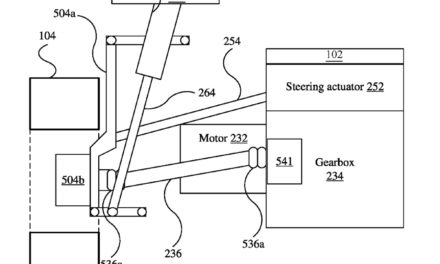With the revamped MacBook Pros supporting Wi-Fi 6E and the iPhone 14 certain to do the same, it’s time for Apple to review its AirPort line-up with Wi-Fi 6E support.
So what is Wi-Fi 6E and do you need it?
Here’s how Wired describes the technology: Wi-Fi 6E is the name for devices that operate in the 6-gigahertz (GHz) band, a new swath of unlicensed spectrum. Until now, our Wi-Fi operated on two bands: 2.4 GHz and 5 GHz. The Wi-Fi 6 standard has various features to improve the efficiency and data throughput of your wireless network and reduce latency for those two bands. Wi-Fi 6E brings those improvements to the 6-GHz band.
Wi-Fi 6 offers better bandwidth (which means faster speeds) and has lower latency, which is better for gaming, video, and other low latency applications.
The problem is that Wi-Fi 6E routers and accessories are expensive. Wired recommends these if you have the moolah: The Netgear Nighthawk RAXE300 (7/10, WIRED Recommends) at $400, and mesh systems like the TP-Link Deco XE75 (two-pack is $300), Motorola Q14 (two-pack is $430), and Google’s Nest Wifi Pro (7/10, WIRED Recommends) (two-pack is $300).
What I want to see is Apple revive its AirPort line-up with Wi-Fi 6E support.
History of the AirPort line-up
In 2016, Apple discontinued the AirPort Express, the AirPort Extreme, and AirPort Time Capsule line of wireless router/backup hardware. I think it ranks as one of the top two dumb ideas the tech giant made in discontinuing products. (The other is when it quit making semi-affordable Mac displays. Thankfully, it’s reversed course on that.)
In November 2016 Bloomberg reported that this was a move to try to sharpen the company’s focus on consumer products that generate the bulk of its revenue. The AirPort Express, the AirPort Extreme, and AirPort Time Capsule, which cost US$99, $199, and $299, respectively, made up a small slice of Apple’s revenue and were part of Apple’s “other products” category on its financial statements.
What I want to see
I want to see a WiFi 6 compatible AirPort mesh networking system akin to that of the Eero and Orbi with a base station that doubles as a server hub for Apple’s HomeKit to make smart home devices easy to set up and use.
An Intego blog by Kirk McElhearn from June 15, 2020, perfectly sums up my feelings (just think 6E for the Wi-Fi part):
A mesh wi-fi system could form part of a broader Apple home network. Imagine if the HomePod, Apple TV, or future Apple in-home devices, acted as a satellite for a wi-fi access point, as well as being a HomeKit hub; this could get more people to buy these media devices, knowing that they would serve more than one purpose.
In addition, the Time Capsule, an AirPort base station with a built-in hard drive, was a great way to ensure that people backed up their Macs. It meant that both desktop Macs and laptops could be automatically backed up without needed to connect an external hard drive. This was not without its quirks, but the technology was seamless. Apple could have extended this backup to iOS devices as well, allowing local backups instead of or in addition to iCloud backups.
Beyond these two elements, it’s Apple’s abdication of the core technology we use to access content on our devices at home that seems surprising.
With all the concerns about privacy and the exploitation of user data, this is an area where Apple could have taken a stance. They could have built their AirPort devices into a mesh wi-fi system, perhaps adding that capability to the HomePod as well, which could give more value to that device. Perhaps Apple has some plans for this in the future, but for now, Amazon has a huge advantage in the smart home market.
Apple revived its external monitor line and this week introduced a new HomePod. Perhaps there’s hope for the AirPort/Time Capsule line yet.
Article provided with permission from AppleWorld.Today



